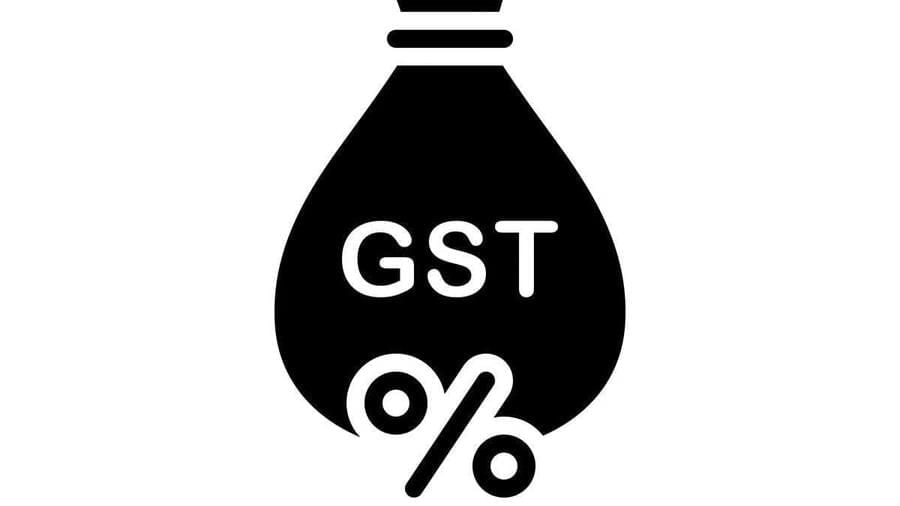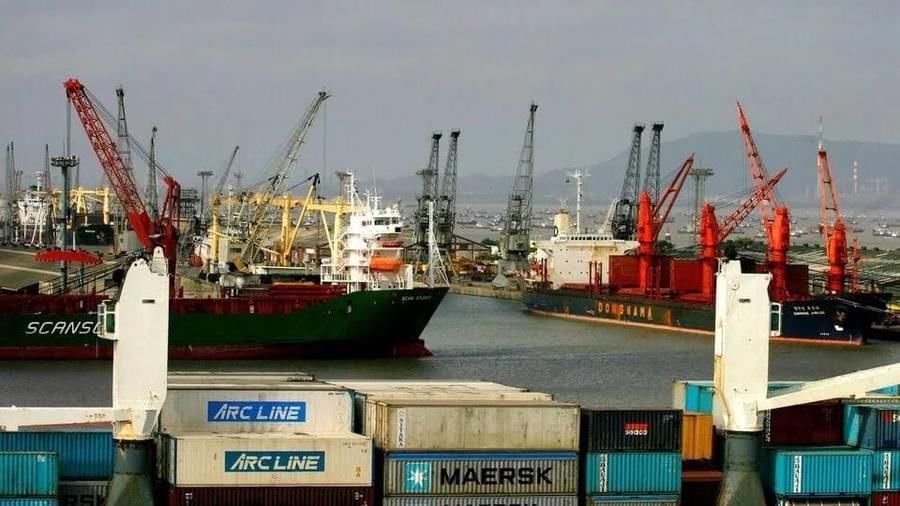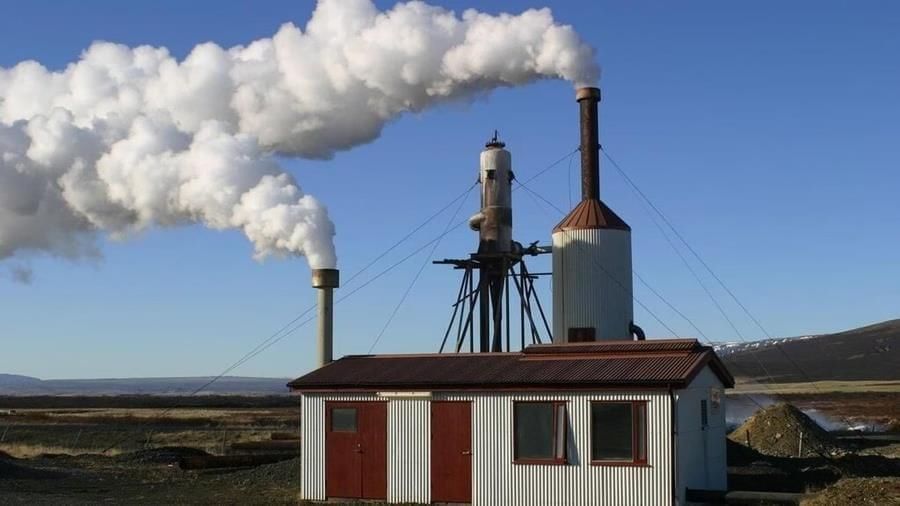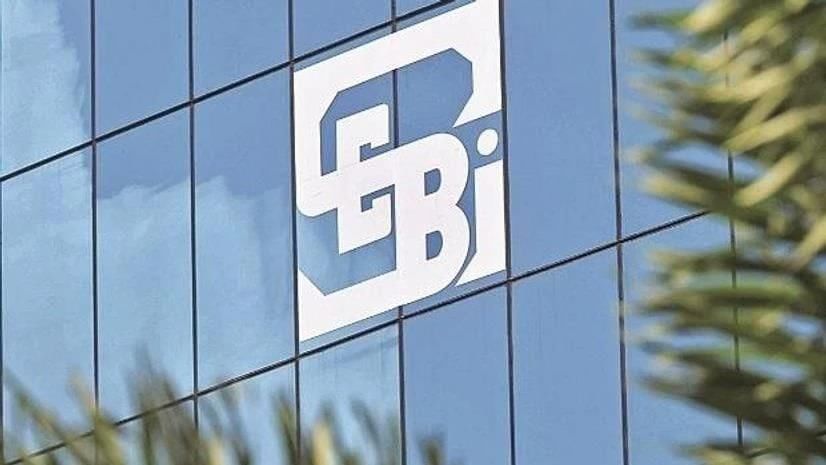Economic Development: September 2025 Current Affairs | Current Affairs: Daily, Weekly & Monthly - CLAT PDF Download
GST 2.0 — Short-Term Pain, Possible Long-Term Gain

Why in News?
The Goods and Services Tax (GST), aimed at establishing a destination-based tax system, was designed to enhance efficiency in taxation by ensuring that taxes are ultimately borne by final consumers, with input taxes being rebated. However, the initial implementation faced challenges including multiple tax rates, inverted duty structures, and significant compliance costs. The new GST rate structure, set to take effect on September 22, 2025, represents a substantial revision with wide-ranging implications for consumption, production, government revenue, and overall macroeconomic stability.
Key Takeaways
- The 2025 reform simplifies the GST rate structure by consolidating most goods and services into three main tax rates: 0%, 5%, and 18%, with a 40% demerit rate for luxury and sin goods.
- About 80% of the 546 goods reviewed will see tax rate reductions, benefiting sectors such as textiles, automobiles, and healthcare.
- Despite potential consumer benefits, the reforms may lead to significant revenue losses for the government and fiscal instability.
Additional Details
- Revenue Implications: GST revenue (R) is calculated as the product of the tax rate (r) and the tax base (E). While lower tax rates can stimulate demand, they may not proportionally increase overall revenue, leading to potential revenue declines.
- Shortfall Projections: The Ministry of Finance estimates an annual revenue loss of ₹48,000 crore, which could significantly impact fiscal stability.
- Income Effects: The reform may initially boost disposable incomes for consumers of essential goods, but lower GST rates could lead to shifts in consumption towards higher-rated goods, potentially benefitting the government in the long run.
- Cascading Issues: The revised GST structure fails to eliminate all cascading effects, as exempt goods do not allow for input tax credits (ITC), complicating the claiming process for businesses.
- Macroeconomic Challenges: With nominal GDP growth falling short of projections, achieving GST revenue targets may become increasingly difficult, pressuring both central and state budgets.
In conclusion, the 2025 GST reforms are a significant effort to streamline the tax system and boost economic activity. They promise lower prices and increased disposable incomes, particularly in labor-intensive sectors. However, the associated fiscal costs and unresolved inefficiencies pose challenges that could undermine the long-term effectiveness of these reforms. Sustainable growth will ultimately require a focus on improving investment capacity and productivity.
The Indian Ports Act, 2025

Why in News?
The Indian Ports Act, 2025, was enacted in August 2025, replacing the outdated Indian Ports Act of 1908. This new legislation aims to create a modern legal and institutional framework for India’s port sector, enhancing efficiency and competitiveness.
Key Takeaways
- The Act integrates port law, tariff regulation, safety, environmental standards, and Centre-State cooperation into a comprehensive legal framework.
- It aligns with broader maritime reforms alongside the Merchant Shipping Act, 2025 and Carriage of Goods by Sea Act, 2025.
- The Act positions India’s port sector for global competitiveness through transparency, sustainability, and efficient regulation.
Additional Details
- Maritime State Development Council (MSDC): A statutory consultative body that coordinates between the Centre and States, advising on the national port strategy, tariff transparency, data standards, and connectivity planning.
- State Maritime Boards: Each coastal state is required to establish or recognize a board within 6 months to oversee non-major ports, including management of licensing, tariffs, development, safety, and environmental compliance.
- Tariff Setting: Major Ports have tariffs fixed by Port Authority Boards, while Non-Major Ports have tariffs set by State Maritime Boards or concessionaires, which must be electronically published for transparency.
- Dispute Resolution: States must establish Dispute Resolution Committees, with appeals directed to High Courts; arbitration and Alternative Dispute Resolution (ADR) are permitted.
- Environmental Norms: The Act mandates waste management, pollution control, disaster preparedness, ballast water restrictions, and penalties for violations.
- Applicability: The Act covers all existing and future ports, navigable channels, and vessels within port limits, with exceptions for those serving armed forces, Coast Guard, or customs.
In summary, the Indian Ports Act, 2025, represents a significant step toward modernizing India's port governance, enhancing efficiency, and ensuring compliance with global standards.
Logistics Ease Across Different States (LEADS), 2025

Why in News?
The Union Minister for Commerce and Industry has recently unveiled the Logistics Ease Across Different States (LEADS), 2025 Report, which assesses and benchmarks the logistics performance across various States and Union Territories in India.
Key Takeaways
- LEADS is a national index designed to measure logistics performance.
- It was developed in 2018, inspired by the World Bank's Logistics Performance Index.
- The report is prepared by the Department for Promotion of Industry and Internal Trade (DPIIT).
- It combines objective indicators with feedback from stakeholders.
- LEADS aims to foster competition and identify best practices in logistics.
Additional Details
- Overview: LEADS serves as a benchmarking tool, comparing logistics efficiency across different regions, thus guiding policy improvements.
- Framework: The index is structured around four key pillars: Infrastructure, Services, Operating & Regulatory Environment, and Sustainable Logistics.
- New Features: Includes corridor-level assessments and API-enabled evaluations to gather real-time data on truck speeds.
- Classification: States and Union Territories are categorized as Leaders, Achievers, or Aspirers based on their performance.
- Alignment: The report supports national initiatives like Make in India and Atmanirbhar Bharat.
The LEADS 2025 report highlights the logistics performance of various states, with Gujarat, Karnataka, Maharashtra, Tamil Nadu, and Rajasthan emerging as the top performers. It emphasizes the need for evidence-based policymaking to reduce logistics costs and improve overall supply chain competitiveness.
In the context of recent developments, consider the following airports:
- Donyi Polo Airport
- Kushinagar International Airport
- Vijayawada International Airport
Swipe, Tap, Spend: How UPI is a decisive step towards formalization of Indian Economy

Why in News?
The recent surge in Unified Payments Interface (UPI) transactions signifies a major transformation in India's economy, moving towards a cash-lite structure. This shift is not just technological but indicates a fundamental change in payment behaviors among households and businesses, enhancing transparency and reducing cash reliance.
Key Takeaways
- In April–June 2025, UPI facilitated 34.9 billion transactions worth ₹20.4 lakh crore, representing 40% of private final consumption expenditure, up from 24% two years prior.
- Cash withdrawals have halved, declining from ₹2.6 lakh crore in 2018 to ₹2.3 lakh crore in 2025, even as the economy has doubled in size.
- UPI's role has expanded beyond daily purchases to include debt repayments and investments, marking a significant step towards economic formalization.
Additional Details
- Digital Dominance: Household payments, previously reliant on cash, are increasingly made through UPI across all income levels.
- Food & Beverages: In April–June 2025, households spent ₹3.4 lakh crore on food and beverages via UPI, accounting for 17% of all UPI transactions and 21% of total household expenditure.
- Decline in Cash Holdings: Cash holdings have dropped dramatically, constituting only 3.4% of gross savings in 2023–24, down from 12.5% in 2020–21.
- Impact on Financial Formalization: UPI transactions support the formalization of firms and workers, aligning with reforms like GST and EPFO contributions.
- UPI has enabled significant debt repayments and investments, with ₹93,857 crore in debt repayments and ₹61,080 crore in securities investments in July 2025.
The rise of UPI reflects not only a success in digital transactions but also a broader economic restructuring in India. Shifting from cash to traceable payment methods has facilitated formalization and financial inclusion. The ongoing challenge will be to maintain this transformation sustainably while addressing potential risks like digital divides and cybersecurity threats.
Corporate Average Fuel Efficiency (CAFE) - Norms to Revamp Vehicle Emissions Framework

Why in News?
India has recently introduced draft Corporate Average Fuel Efficiency (CAFE) 3 norms through the Bureau of Energy Efficiency (BEE). These norms aim to enhance fuel efficiency and emission standards while providing flexibility for the automotive industry, particularly for small cars and electric vehicles (EVs).
Key Takeaways
- The CAFE framework was initially launched in 2017 to regulate fuel consumption and carbon emissions from passenger vehicles.
- CAFE 3 norms are designed to tighten standards and align India's regulations with global practices.
- Incentives are provided for small cars and electric vehicles to boost their market presence.
Current CAFE Framework in India
- Introduction: The CAFE system was implemented in 2017 by the BEE, under the Ministry of Power, to control fuel consumption and carbon emissions from passenger vehicles.
- Scope: These norms apply to vehicles including petrol, diesel, LPG, CNG, hybrids, and EVs, all weighing less than 3,500 kg.
- Objectives: The framework aims to reduce oil dependency and air pollution by pushing automakers to lower carbon dioxide emissions and encouraging the production of cleaner vehicles.
- CAFE 2: In 2022-23, CAFE norms were tightened, capping fuel consumption at 4.78 litres/100 km and CO₂ emissions at 113 g/km, with increased penalties for violations.
- Need for CAFE 3: Current regulations favor SUVs over smaller cars, which CAFE 3 aims to correct by aligning with international standards.
Key Features of Proposed CAFE 3 Norms
- Applicability: Targets M1 category passenger vehicles with a seating capacity of up to 9 (including the driver) and a maximum weight of 3,500 kg. Non-compliance will incur penalties under the Energy Conservation Act, 2001.
- Efficiency Targets: The efficiency formula is defined as [0.002 x (W – 1170) + c], measured in petrol-equivalent litres per 100 km, with specific constants adjusting over time.
- Incentives for Small Cars: Additional relaxations in CO₂ emissions for compact petrol cars aim to stimulate the small car segment, which has faced a significant decline in sales.
- Boost for EVs and Alternative Fuels: The introduction of super credits allows vehicles like EVs and hybrids to count more favorably towards compliance targets, along with a Carbon Neutrality Factor (CNF) that provides further ease based on fuel types.
- Emissions Pooling: Car manufacturers may form a pool to collectively meet emissions targets, reducing costs and fostering collaboration within the industry.
The proposed CAFE 3 norms represent a pivotal change in India's emission strategy, focusing on reviving the small car market, incentivizing electric vehicles, and establishing stricter long-term efficiency goals. Effective implementation could significantly reduce India's oil import dependency and promote greener mobility options, although challenges in industry adaptation, consumer acceptance, and infrastructure readiness for alternative fuel vehicles remain.
Govt to Push Geothermal Pilots Under New Policy

Why in News?
The Ministry of New & Renewable Energy (MNRE) has introduced its inaugural National Policy on Geothermal Energy, aimed at establishing a framework for the development and regulation of geothermal resources in India.
Key Takeaways
- The policy was officially announced in September 2025.
- It supports India's goal of achieving Net Zero emissions by 2070.
- The scope includes both power generation and direct-use applications.
- MNRE will lead implementation, collaborating with various stakeholders.
- Financial support includes tax incentives and grants.
Additional Details
- Financial & Regulatory Support: The policy offers tax incentives, grants, and concessional financing, alongside long-term leases of up to 30 years. Additionally, Viability Gap Funding (VGF) is provided to cover high initial costs estimated at ₹36 crore per MW.
- The emphasis is on repurposing abandoned oil and gas wells for geothermal energy, with collaborations already in place with ONGC and Vedanta Ltd.
- Global partnerships have been established with countries like Iceland, Norway, the US, and Indonesia for research and development in Enhanced and Advanced Geothermal Systems.
- Currently, five pilot projects have been sanctioned for resource assessment and demonstration in various regions.
India's geothermal energy potential is estimated at 10.6 GW as identified by the Geological Survey of India (GSI), with over 381 hot springs mapped across the country. Although there are no grid-connected geothermal plants yet, ongoing projects include a 20 kW pilot binary-cycle plant in Manuguru, Telangana, and other pilot projects in Ladakh, Gujarat, and Rajasthan. The future roadmap targets a geothermal capacity of 10 GW by 2030 and approximately 100 GW by 2045.
Major Geothermal Sites in India
| Region/State | Site/Province | Key Features & Notes |
|---|---|---|
| Ladakh (Himalayan Province) | Puga Valley | High-temperature hot springs; identified as promising for pilot projects. |
| Himachal Pradesh | Manikaran | Popular hot spring zone; suitable for geothermal plants and tourism. |
| Uttarakhand | Tapoban & Alaknanda Valley | Himalayan geothermal systems; identified for research. |
| Chhattisgarh | Tattapani Field | Well-studied site; suitable for direct heat use. |
| Andaman & Nicobar Islands | Volcanic geothermal fields | High geothermal potential; could significantly reduce power costs. |
Sample Registration System (SRS) Statistical Report 2023

Why is it Newsworthy?
The Sample Registration System (SRS) Statistical Report 2023 reveals important changes in India's population regarding fertility and mortality rates.
- Total Fertility Rate (TFR): The TFR has decreased to 1.9 in 2023, falling below the replacement level fertility of 2.1.
- Highest TFR: Bihar with 2.8Lowest TFR: Delhi with 1.2
- TFR Explained: The TFR represents the average number of children a woman is expected to have during her reproductive years, which are from 15 to 49 years.
- Replacement Level TFR: This is the average number of children needed per woman to replace one generation with the next.
- Crude Birth Rate (CBR): The CBR has declined from 19.1 in 2022 to 18.4 in 2023. CBR Explained: The CBR indicates the number of live births occurring in a year per 1,000 people in the population.
- Sex Ratio at Birth (SRB): The SRB for India from 2021 to 2023 was 917 girls per 1,000 boys.
- Highest SRB: Chhattisgarh with 974 girls per 1,000 boys. Lowest SRB: Uttarakhand with 868 girls per 1,000 boys.
- Mortality Trends: The Crude Death Rate (CDR) in 2023 was 6.4, and the Infant Mortality Rate (IMR) was 25 in 2023.
About the Sample Registration System (SRS)
The SRS, conducted by the Office of the Registrar General of India, is a comprehensive demographic survey that gathers population data based on age, sex, and marital status.
- It assesses various indicators such as CBR, TFR, Age-Specific Fertility Rate (ASFR), General Fertility Rate (GFR), and related statistics at both national and sub-national levels.
SEBI Proposal May Allow FPIs to Trade in Gold, Silver

Why in News?
SEBI is currently evaluating a proposal that would permit foreign portfolio investors (FPIs) to engage in trading non-cash settled, non-agricultural commodity derivatives. If this proposal is approved, it would enable FPIs to invest in commodities such as gold, silver, zinc, and other base metals, thereby broadening investor participation and enhancing the depth of India's commodity markets.
Key Takeaways
- FPIs could gain access to a wider range of commodity trading options.
- The proposal aims to deepen India's commodity market and improve price discovery.
- This move follows SEBI's recent approval of a streamlined process for foreign investors.
Additional Details
- Commodity Derivatives: These are financial contracts tied to physical commodities, such as oil, gold, or wheat, that help manage price risks or allow for profit from market fluctuations.
- Current Trading Rules: At present, foreign investors are limited to trading cash-settled contracts for non-agricultural commodities like natural gas and crude oil, but they cannot trade ferrous or precious metals.
- Proposed Changes: FPIs would be allowed to trade in physically settled non-agricultural commodities like gold, silver, zinc, and lead, which are crucial markets where India plays a significant global role.
- Benefits of the Proposal: Enhanced capital efficiency, broader investment opportunities, and improved liquidity in commodity markets are anticipated outcomes of allowing FPIs to participate in these trades.
In conclusion, SEBI's initiative to review these trading regulations for FPIs reflects a strategic move to strengthen India's commodity markets amid ongoing global economic uncertainties, potentially allowing greater domestic hedging by Indian corporates against international market fluctuations.
PLI Scheme for White Goods

Why in News?
The Centre has announced the reopening of the application window for the Production-Linked Incentive (PLI) Scheme for White Goods, specifically targeting Air Conditioners and LED Lights. This decision follows the strong response and success of the earlier rounds of the scheme.
Key Takeaways
- The PLI Scheme aims to create a comprehensive component ecosystem for Air Conditioners and LED lights.
- It seeks to integrate India into global supply chains while boosting domestic manufacturing.
Additional Details
- Objective: The scheme's primary goal is to develop a complete component ecosystem for ACs and LED lights, enhancing India's role in global manufacturing.
- Approval: The scheme was approved by the Union Cabinet in April 2021 and is implemented by the Department for Promotion of Industry and Internal Trade (DPIIT).
- Duration: The PLI Scheme will be active for seven years, spanning FY 2021-22 to FY 2028-29, with a total financial outlay of ₹6,238 crore.
- Incentives: Eligible companies can receive incentives of 4-6% on incremental turnover (over base year 2019-20) for both domestic sales and exports, applicable for five years.
- Eligibility: Applicants must be companies incorporated under the Companies Act, 2013. Eligibility is contingent upon achieving specific levels of incremental sales and investments. Entities already benefiting from other PLI schemes for the same products are not eligible.
- Beneficiaries So Far: 83 companies have been approved under the scheme, with a committed investment of ₹10,406 crore, covering the entire value chain of AC and LED components.
- Employment and Exports: The scheme is expected to create jobs, expand exports, and enhance self-reliance in components that were previously imported.
This initiative reflects the government's commitment to foster a robust manufacturing environment in India, thereby enhancing economic growth and self-sufficiency.
India’s Generic Medicines: A Pillar of Global Healthcare

Why in News?
The Indian pharmaceutical sector, which heavily depends on the U.S. market, is facing significant challenges due to potential sector-specific duties. With the U.S. accounting for over 31% of Indian pharmaceutical exports and sourcing nearly half of its generics from India, these concerns threaten India's status as a major supplier of affordable medicines. As the global generic market is projected to reach $614 billion by 2030, the outcome of ongoing trade negotiations with the U.S. is vital for the future of this industry.
Key Takeaways
- India contributes around 20% of the global supply of generic drugs, earning the title "pharmacy of the world."
- Indian generics dominate U.S. prescriptions, especially in critical areas like diabetes, anxiety, depression, and cancer.
- Generics from India have saved the U.S. healthcare system $219 billion in 2022 alone, highlighting their importance in global healthcare affordability.
Additional Details
- U.S. Tariff Threats: The U.S. administration has raised concerns regarding high drug prices and India's intellectual property (IP) regime. There are calls for international reference pricing (IRP) and stronger IP protections, which could increase drug costs and delay generic entries.
- India has resisted these norms and must continue to safeguard TRIPS flexibilities, including compulsory licensing provisions.
- To protect its exports, India is considering concessions, such as supplying generics at 20–25% of branded prices for three years post-patent expiry.
- India's approach to its Bilateral Trade Agreement (BTA) with the U.S. needs a shift from transactional dealings to a more strategic position. By emphasizing the global public good of Indian generics, India can potentially enhance its bargaining power. Moreover, joint ventures with various regions, including the U.S. and EU, could alter the trade dynamics favorably for India.
In conclusion, as India seeks to diversify its pharmaceutical trade beyond the U.S. and strengthen its market presence globally, it must focus on technology transfer, collaborative R&D, and promoting generics as a global public good. This strategy will not only protect public health but also secure India's interests in the pharmaceutical sector.
Women’s Unpaid Care Work: Calls for Better Data

Why in the News?
Experts have urged the government to refine the Time Use Survey (TUS) to determine if the increasing unpaid care work performed by women is a choice or an obligation.
Key Takeaways
- Unpaid care work is a critical yet undervalued component of global economies.
- In India, women spend significantly more time on unpaid care work compared to men.
- Current surveys do not adequately capture the motivations behind women’s unpaid labor.
- The lack of comprehensive data hampers understanding of gender inequality in the labor market.
Additional Details
- Unpaid Care Work: Women globally engage in three times more unpaid care work than men. In India, women dedicate approximately 4.5 hours daily to household chores and caregiving compared to 1.5 hoursfor men. This includes tasks such as:
- Cooking, cleaning, and household maintenance.
- Caring for children, the elderly, and sick family members.
- Community-related unpaid services, such as water collection.
- The economic contributions of women’s unpaid work are not reflected in GDP calculations, leading to an undervaluation of their efforts.
- This unpaid labor limits women's access to education and formal employment, perpetuating economic dependency.
Impact on Female Labour Force Participation
India's female labour force participation rate is around 23%, significantly lower than global standards and countries like China (61%) and Bangladesh (38%). The heavy unpaid care responsibilities on women contribute to this disparity.
Moreover, the absence of institutional support, such as affordable childcare and flexible work arrangements, exacerbates the issue.
Limitations of the Time Use Survey
The National Sample Survey Office (NSSO) conducted India's first TUS in 1998-99 and the second in 2019. However, experts argue that the survey does not fully address essential issues such as:
- Choice vs. Compulsion: Are women engaging in unpaid care work by choice or due to societal pressures?
- Quality of Work: How does unpaid care work impact women's health and job aspirations?
- Policy Integration: How can TUS findings inform childcare and employment policies?
Expert Recommendations for Improvement
- Refined Survey Methodology: Introduce qualitative questions to assess whether women view unpaid care work as a duty or a choice.
- Integration with Labour Statistics: Link TUS data with the Periodic Labour Force Survey (PLFS) to evaluate the impact of unpaid care work on employment trends.
- Policy-Oriented Use of Data: Leverage findings to enhance initiatives like the Pradhan Mantri Matru Vandana Yojana (PMMVY) and Anganwadi services, ensuring women receive support for their caregiving roles.
- Recognition in GDP Accounting: Explore methodologies to assign economic value to unpaid care work, such as satellite accounts.
Improving the measurement of unpaid care work is crucial for understanding its impact on women's economic participation and addressing gender inequality in India.
India’s Outward FDI Trends - Shift Towards Tax Havens
 Why in News?
Why in News?
Nearly 60% of India’s outward FDI is now routed through tax havens like Singapore, Mauritius, and the UAE, reflecting both tax advantages and strategic global expansion needs.
Key Takeaways
- Significant growth in India's outward FDI over the past two decades.
- Preference for low-tax jurisdictions among Indian companies.
- Government support through regulatory reforms and treaties.
Additional Details
- Outward FDI Growth: India’s outward foreign direct investment (FDI) has seen remarkable growth, driven by the ambition of Indian firms to enhance their global footprint.
- Tax Havens Usage: In 2023-24, 56% of outward FDI (approximately Rs. 1,946 crore of a total Rs. 3,488 crore) flowed into low-tax jurisdictions, underscoring the role of Singapore, Mauritius, and the UAE.
- Strategic Expansion: Indian companies are establishing subsidiaries abroad to access new markets, acquire technology, form strategic partnerships, and diversify risks.
- The government has facilitated this trend by easing regulations and enhancing bilateral investment treaties.
- Concerns remain regarding tax revenue leakage and regulatory arbitrage, even as these jurisdictions provide strategic advantages.
In conclusion, India's outward FDI trajectory reveals a complex interplay between tax efficiencies and the necessity for global expansion. As nearly 60% of investments are funneled through tax havens, these regions serve both as gateways for international growth and protective buffers against global trade uncertainties. The ongoing challenge for India will be to maintain an effective regulatory framework while fostering its companies' aspirations for global presence.
The Growing Relevance of Traditional Medicine

Why in News?
The significance of traditional medicine has surged as it remains a primary health-care system for billions worldwide, particularly in low- and middle-income countries. According to the World Health Organisation (WHO), it is practiced in 170 of its 194 member states, covering 88% of the global population.
Key Takeaways
- Traditional medicine plays a vital role in health care, especially in regions with limited access to modern healthcare.
- It contributes to biodiversity conservation, nutritional security, and sustainable livelihoods.
- The global market for traditional medicine is projected to reach $583 billion by 2025.
Additional Details
- Global Expansion: The traditional medicine sector is projected to grow at an annual rate of 10%–20%. China leads with a $122.4 billion traditional Chinese medicine industry, followed by India’s AYUSH sector valued at $43.4 billion.
- India's Ayurvedic Transformation: India has become a leader in promoting traditional medicine, particularly Ayurveda, with the AYUSH sector comprising over 92,000 enterprises and significant revenue growth.
- Public acceptance of AYUSH systems is high, with awareness levels at 95% in rural areas and 96% in urban centers.
- Scientific Validation: India has invested in institutions focused on clinical validation and integrative care models to bridge traditional and modern medicine.
- International collaborations have expanded, with India signing 25 bilateral agreements and establishing AYUSH information cells in 39 countries.
- WHO Global Traditional Medicine Centre: This center aims to integrate traditional practices with modern technologies like AI and big data.
In conclusion, traditional medicine is witnessing a renaissance driven by demand for preventive and sustainable health systems. India's Ayurvedic transformation exemplifies how traditional knowledge can be revitalized through scientific validation and international cooperation, thereby enhancing its role in global health.
|
1360 docs|798 tests
|
FAQs on Economic Development: September 2025 Current Affairs - Current Affairs: Daily, Weekly & Monthly - CLAT
| 1. What is GST 2.0 and how is it expected to impact the Indian economy? |  |
| 2. What are the key features of the Indian Ports Act, 2025? |  |
| 3. How does UPI contribute to the formalization of the Indian economy? |  |
| 4. What are the objectives of the Corporate Average Fuel Efficiency (CAFE) norms? |  |
| 5. What role do generic medicines play in global healthcare? |  |
















